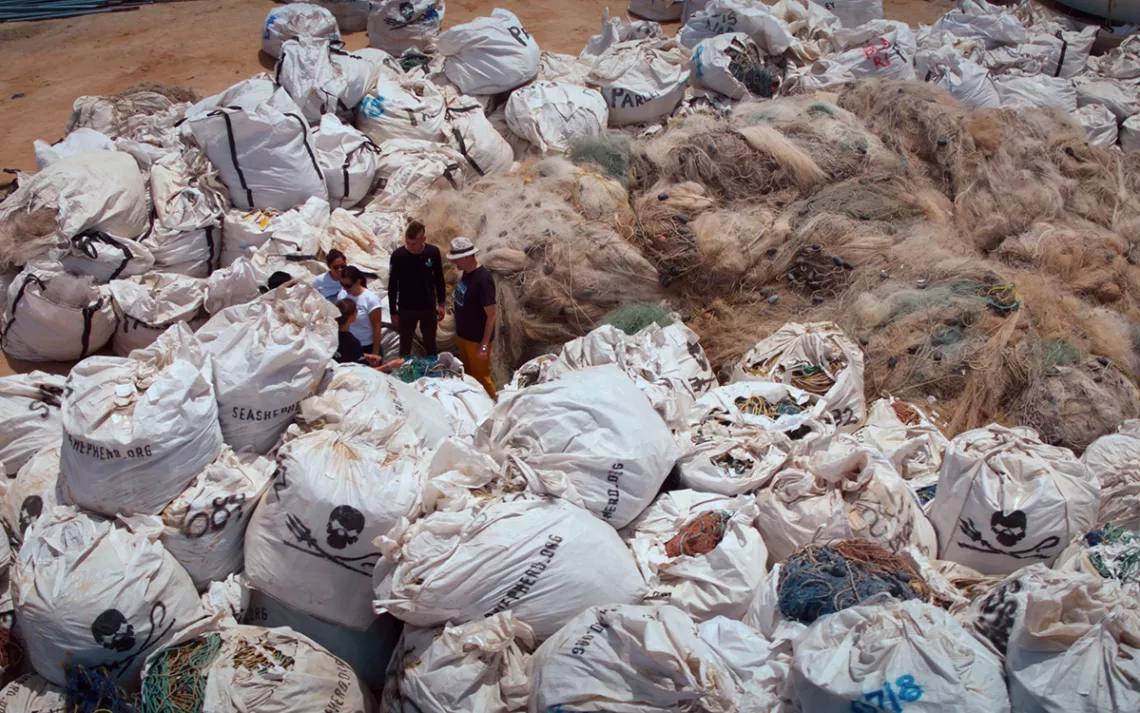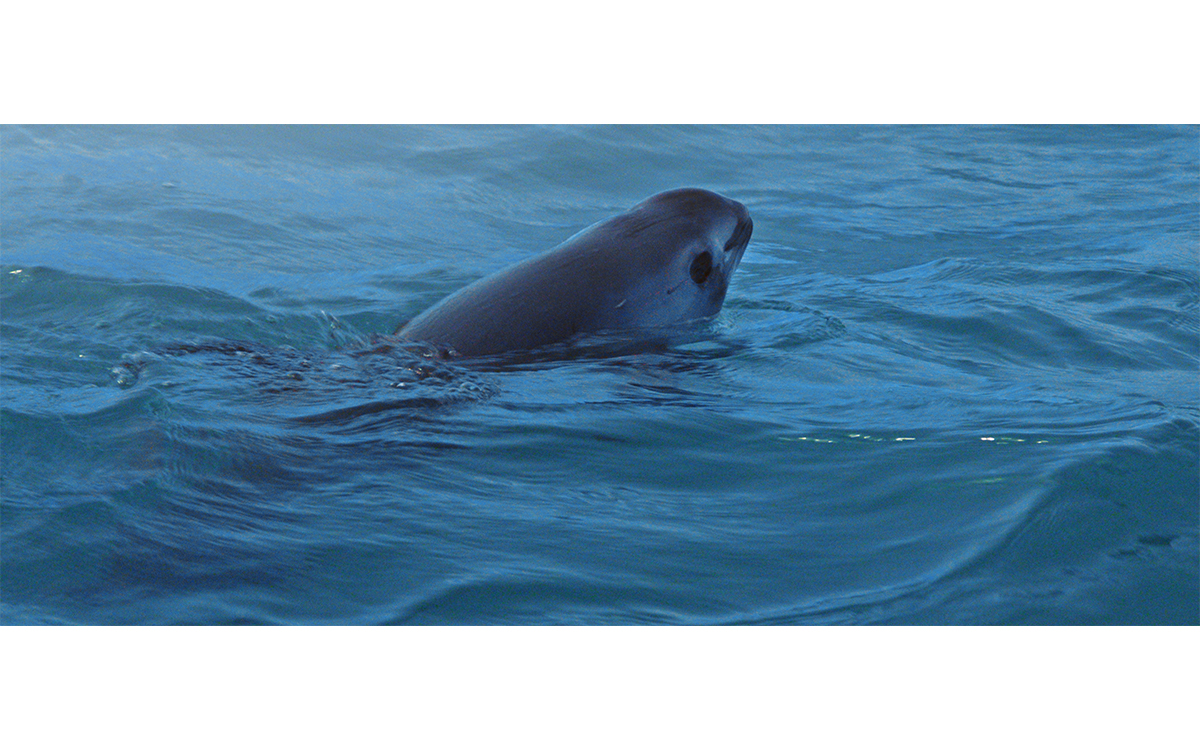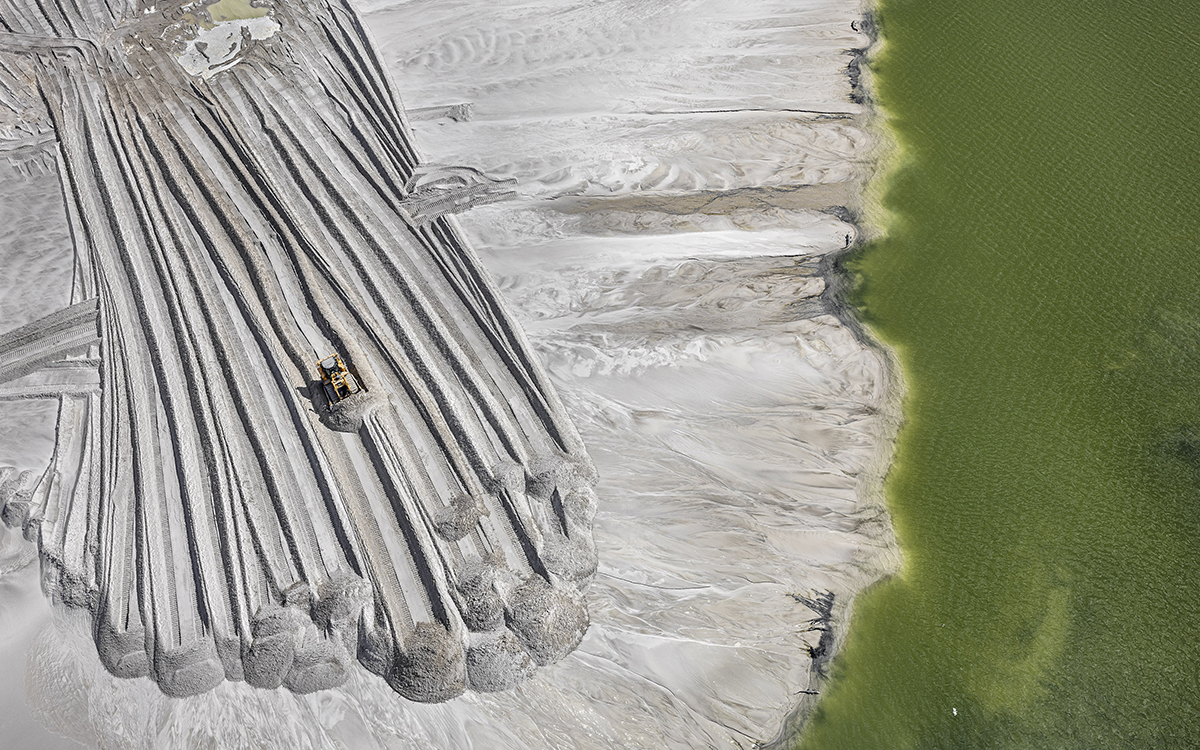Five Earth-Centric Sundance Films to Watch Out For
The top eco and adventure flicks from this year’s iconic film festival

A ghost net retrieval site featured in Sea of Shadows | Courtesy of Terra Mater Factual Studios/Richard Ladkani
Come late January, the movie industry turns its spotlight to Sundance, the largest independent film festival in the United States. A-list actors and directors, indie favorites, and up-and-comers descend on Park City, Utah, for 10 days of screenings, talks, events, and star-studded parties. Much buzz from this year’s event came from big-money acquisitions like the political thriller The Report and the comedy Late Night, as well as works from a growing number of female filmmakers. But provocative documentaries made quite the splash, too, including several that shine a light on pressing environmental, conservation, and social hot buttons—from activists trying to save a rare dolphin species from extinction to the first all-female crew to race a sailboat around the world, thus shifting outdated perceptions about a woman’s place in a male-dominated sport (and society as a whole, for that matter).
Here are five Sundance premieres that deserve two thumbs up for their commitment to activism, conservation, and making the world a more just place.
Sea of Shadows
 The winner of Sundance’s Audience Award for World Cinema Documentary, this riveting film by director Richard Ladkani and executive producer Leonardo DiCaprio (both of whom were behind 2016’s The Ivory Game) feels more like a spy thriller. It tracks the valiant effort to save the vaquita, the world’s smallest and rarest dolphin, also the most endangered sea mammal. Fewer than 15 elusive vaquitas—which have never been filmed underwater—are believed to remain in Mexico’s Sea of Cortez, which Jacques Cousteau once called the “aquarium of the world.” But its diversity is increasingly threatened by the illegal trade of another endangered marine species: a fish called the totoaba, known as the “cocaine of the sea” because its bladder—a prized delicacy in China believed to hold healing powers—can fetch as much as $100,000 per kilogram on the black market.
The winner of Sundance’s Audience Award for World Cinema Documentary, this riveting film by director Richard Ladkani and executive producer Leonardo DiCaprio (both of whom were behind 2016’s The Ivory Game) feels more like a spy thriller. It tracks the valiant effort to save the vaquita, the world’s smallest and rarest dolphin, also the most endangered sea mammal. Fewer than 15 elusive vaquitas—which have never been filmed underwater—are believed to remain in Mexico’s Sea of Cortez, which Jacques Cousteau once called the “aquarium of the world.” But its diversity is increasingly threatened by the illegal trade of another endangered marine species: a fish called the totoaba, known as the “cocaine of the sea” because its bladder—a prized delicacy in China believed to hold healing powers—can fetch as much as $100,000 per kilogram on the black market.
Ladkani’s cameras put the viewer smack in the midst of the nail-biting action in the small Mexican coastal town of San Felipe, where activists and journalists work to expose the corruption of Mexican drug cartels, Chinese traffickers, and the paid-off government officials behind the whole racket. Local players who speak on camera are heavily pixelated and their voices disguised, and Ladkani’s crew required tight security detail during filming. It all underscores the sinister forces determined to thwart them. Complicating matters further is pushback from legal fishermen, since the ban on nets effectively prevents them from earning an honest living. And then, of course, there’s the emotional gut punch inherent in this kind of conservation effort: images of a vaquita, looking terrified as scientists desperately endeavor to save it, and those of a massive, majestic sea turtle, lifeless in its poachers’ deadly gill nets, are impossible to unsee.
Just two months after The Ivory Game was released on Netflix in 2016, the Chinese government banned the trade of ivory. It remains to be seen what kind of big-picture impact Sea of Shadows will have—but considering that National Geographic Documentary Films nabbed worldwide distribution rights for a reported $3 million (believed to be the largest documentary acquisition from Sundance in 2019), here’s hoping it will make quite the splash.
How to See It: Release information still to come.
The Boy Who Harnessed the Wind
It’s hard not to be inspired by the remarkable true-life story of William Kamkwamba, who displays remarkable scrappiness, smarts, and determination in the face of overwhelming obstacles—namely, an impending famine in his African village. Along with the directorial debut of Oscar-nominated actor Chiwetel Ejiofor (who also stars as William’s father, Trywell), the film, based on Kamkwamba’s 2009 book by the same name, also offers a timely message about governments that turn a blind eye to the devastating effects of climate change (and viable technologies to help combat them, like wind energy). But the heart of the film centers around plucky, mechanically inclined William and his unstoppable quest: to get an education, convince his father that his idea (which requires disassembling Trywell’s bicycle) will work, and cobble together a wind-powered contraption that will enable the village to grow grain again.
Plodding at times, the film would have benefited from more attention focused on the painstaking process of the village coming together to build William’s windmill; it’s a triumph that deserves more than just a few final scenes that feel like an afterthought. Even so, The Boy, not surprisingly, took home this year’s Alfred P. Sloan Prize for a film promoting science or technology—and overall, it’s a worthy, family-friendly watch that will make audiences think harder about big-picture issues and their role in creating (and solving) them.
How to See It: On March 1, Netflix plans a streaming launch as well as limited theatrical release.
Maiden
Need a dose of kick-in-the-pants inspiration for your next adventure? Look no further than this rollicking documentary by director-writer Alex Holmes, which chronicles the remarkable achievement of the first all-woman yacht crew to compete in a round-the-world race. It opens with a shot of crashing seas and a sinister sentiment, delivered via voiceover: “The ocean is always trying to kill you.” The voice is that of the movie’s heroine, Tracy Edwards, a British sailor who, following a rocky adolescence, finds her passion crewing on yachts in her early 20s. After reading about the iconic Whitbread Round the World Race (as of 2005, it’s known as the Volvo Ocean Race), Edwards eventually talks her way onto a participating vessel—as a cook preparing meals for the all-male crew. But no skipper would entertain the idea of having a “girl” as an actual sailor, so Edwards decides to put her own team together for the 1989–90 race.
Maiden soars from there, as a fiercely determined Edwards finds an all-female crew, a secondhand boat, and sponsors. The film offers a beautifully orchestrated harmony of interviews with Edwards and her crew members intertwined with riveting firsthand footage of the grueling race (some of which comes courtesy of a video camera brought onboard), putting the viewer right alongside these gutsy women as they battle nonstop obstacles during their high-seas adventure, both on the ocean (think stories-tall waves and equipment failures) and off (biased media and mocking male competitors).
By the time Maiden cruises back into port at Southampton, England, where the six-segment, nine-month race kicked off, even the staunchest of landlubbers are sure to be rooting for Edwards’s groundbreaking crew. We won’t spoil the ending, of course, but suffice it to say, there are tears—even as Edwards and her crew members relive the memory on camera—and you just might be moved enough to shed a few yourself.
How to See It: Sony Pictures Classics is releasing to select theaters on June 28.
Anthropocene: The Human Epoch
Don’t let the snoozy science-project title fool you: This riveting documentary entrances with spectacular imagery and sobering statistics about the damage humans are inflicting on the planet. The third installment of a trilogy of films first released in 2006 (and now part of a traveling museum exhibit), “anthropocene” refers to the current geological age, in which human impact has irrevocably changed the planet more than all other natural processes combined. A group of scientists has been studying this phenomenon for nearly a decade, and their work is brought to grim life through this four-year collaboration between award-winning landscape photographer Edward Burtynsky and documentary filmmakers Jennifer Baichwal and Nicholas de Pencier, who traveled to 20 countries on six continents to capture the film’s shocking footage.
Anthropocene opens with a depressing scene in Kenya, featuring workers sorting through 105 tons of confiscated elephant tusks, taken from approximately 10,000 elephants. Next up is the Siberian city of Norilsk, home of Russia’s largest smelting factory and one of the most polluted places on Earth. Then it takes viewers to Immerath, Germany, where power generator RWE AG’s immense Hambach mine is gobbling up farms, towns, and old-growth forests. It’s horrifying to watch leviathan, monster-like machinery tear up the earth and tear down a historic church to make way for the rapidly expanding mining operations.
Equally heartbreaking is footage of the Dandora landfill in Kenya, where more than 6,000 scavengers comb through the filth every day to collect bottles, cans, and anything else they might be able to recycle for a few pennies. As the voiceover narrator, Swedish actress Alicia Vikander, explains, the majority of this growing mass of plastic, concrete, and other human detritus will wind up preserved in the earth’s rock layer as “technofossils.”
Despite all the damage being captured, filmmakers manage to convey a sense of stark beauty throughout, thanks to expansive, sweeping imagery. Even so, Anthropocene is by no means a feel-good film: Grab the staunchest climate-change deniers you know (and perhaps, an adult beverage to go along with your popcorn) and settle in for what should be required viewing by all humans in this depressing new era of our own creation (destruction?).
How to See It: As of this story going to press, distribution rights are being negotiated that will determine the movie’s release. In addition, the Anthropocene exhibition will continue at the National Gallery of Canada until February 24.

Courtesy of Edward Burtynsky
Words From a Bear
Until the late 1960s, the esteemed Pulitzer Prize for Literature—or any major literary award, for that matter—had never been awarded to a Native American writer. Then, Kiowa author and artist N. Scott Momaday’s first novel, House Made of Dawn, was released in 1968 to critical acclaim; the following year, it earned the Pulitzer award, helping to spark what’s known as the Native American Renaissance and cementing Momaday among the greatest literary voices in US history.
This compelling American Masters documentary by Jeffrey Palmer, also a Kiowa descendent, offers a multifaceted look at Momaday’s life, inspiration, and influences—and even includes commentary from big-time Hollywood figures like Sundance founder Robert Redford and actor Jeff Bridges, both of whom are big fans of Momaday’s work. But the real star of the show is Momaday himself, who recites from his 30-year collected works of poetry, shares insights about his childhood growing up in Arizona and New Mexico (at age eight, he declared he would be a writer), and tells enchanting Kiowa tales that are rich in symbolism and spirituality, such as that of the Seven Sisters and the origin of the Big Dipper constellation. Palmer complements his subject’s eloquent prose with vintage photos depicting Momaday’s childhood, clever animated sequences, and vast, expansive images of the western landscapes where Native American tribes once flourished.
And in these trying, modern-day times, Momoday himself offers viewers some much-needed hope. “In another 50 or 100 years, we’re going to back look on this period of time, and it’s going to be like ancient history,” he states. “How can we accommodate ourselves to it? How can we adjust to it? I think we can. I have that much faith in humanity. It’s the spirit that counts—and the spirit is indomitable.”
How to See It: The film is scheduled for release during the 2019 season of PBS’s American Masters Pictures, but a date has not been officially announced.
 The Magazine of The Sierra Club
The Magazine of The Sierra Club



